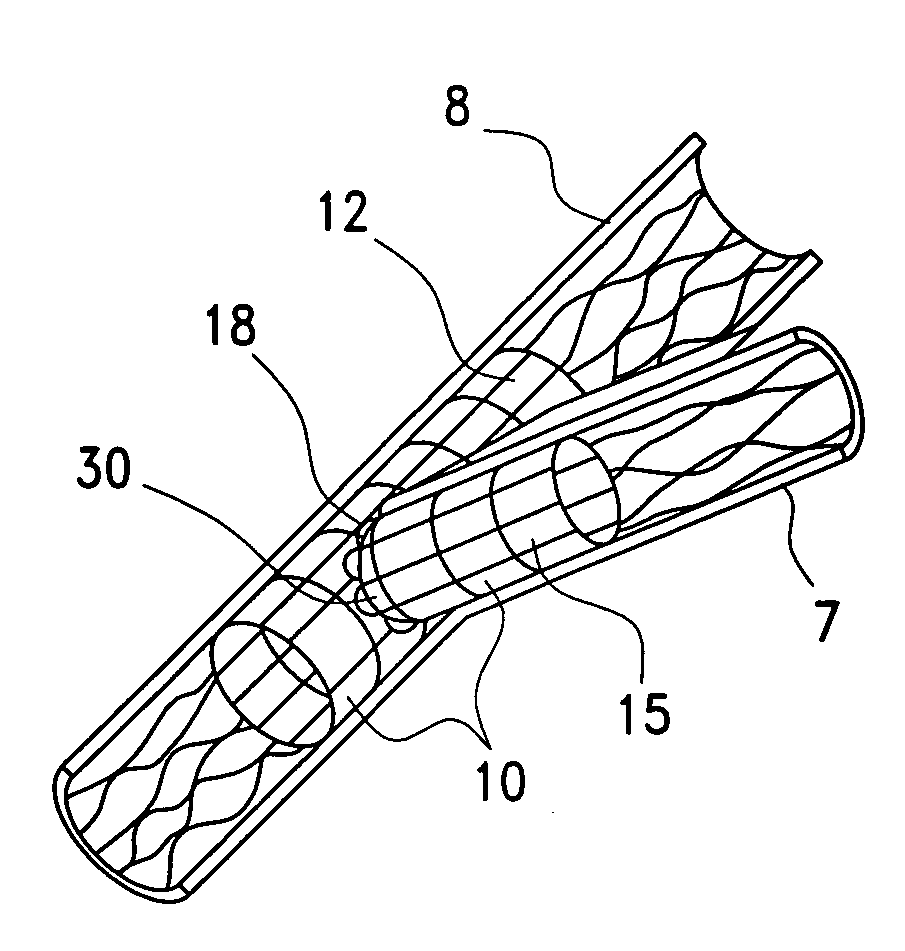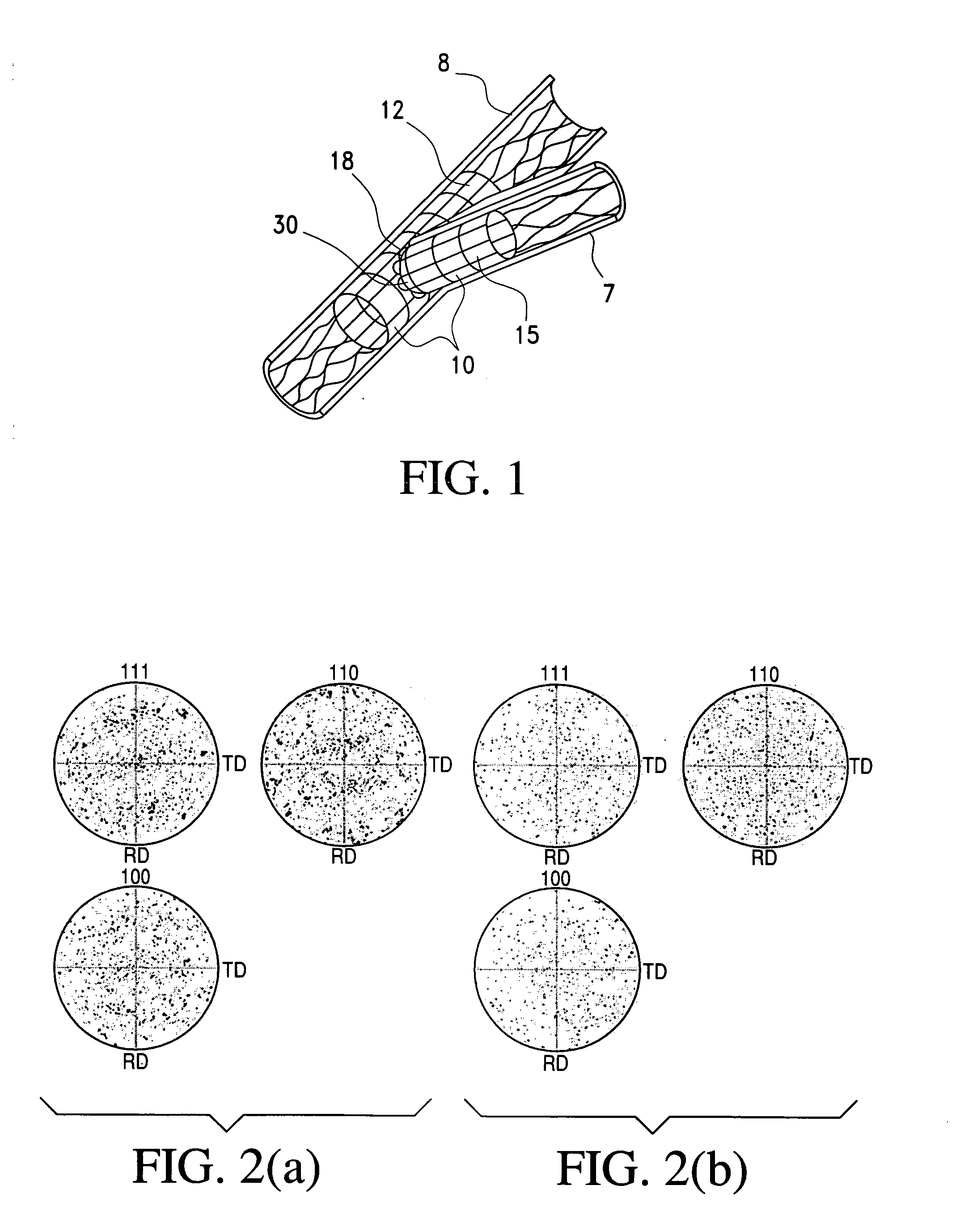Low texture, quasi-isotropic metallic stent
- Summary
- Abstract
- Description
- Claims
- Application Information
AI Technical Summary
Benefits of technology
Problems solved by technology
Method used
Image
Examples
working example
[0082] As outlined, it is well known that metal tubes and wires produced by drawing develop a preferred orientation, typically a uniaxial or fibrous texture. In a fibrous texture most of the grains are aligned parallel to the longitudinal axis. Specific crystallographic directions are oriented parallel to the tube / rod axis and frequently another preferred orientation develops in the radial direction (cyclic texture). Furthermore there are usually differences in orientation and texture at the surface and the interior. Specifically to tubes, the crystallographic texture developed depends on the relative reductions of wall thickness and tube diameter. When the wall thickness and diameter of a tube are reduced proportionally, the texture is similar to that of a rod or wire. If only the wall thickness is reduced the texture resembles the one of a rolled sheet. When only the tube diameter is reduced without affecting the wall thickness preferred orientations develop in directions tangenti...
PUM
 Login to View More
Login to View More Abstract
Description
Claims
Application Information
 Login to View More
Login to View More - R&D
- Intellectual Property
- Life Sciences
- Materials
- Tech Scout
- Unparalleled Data Quality
- Higher Quality Content
- 60% Fewer Hallucinations
Browse by: Latest US Patents, China's latest patents, Technical Efficacy Thesaurus, Application Domain, Technology Topic, Popular Technical Reports.
© 2025 PatSnap. All rights reserved.Legal|Privacy policy|Modern Slavery Act Transparency Statement|Sitemap|About US| Contact US: help@patsnap.com


